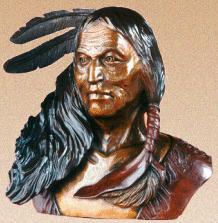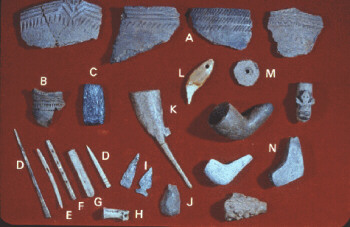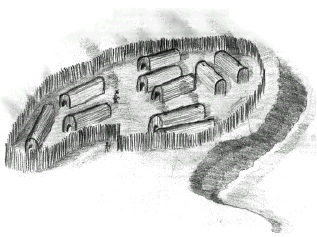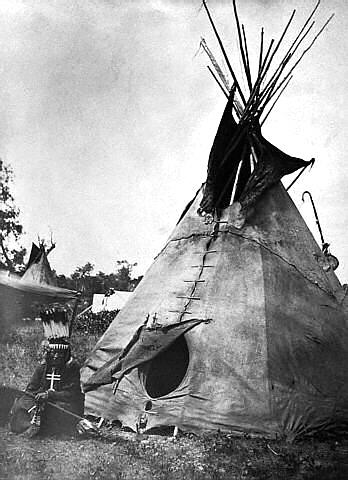

LATE WOODLAND PERIOD
The easiest way for archaeologists to distinguish Late Woodland period archaeological sites from earlier Middle Woodland sites is by looking at the pottery. During the Middle Woodland period the people made conical based pottery vessels by the coil method and decorated them with various forms of stamps. By the beginning of the LATE WOODLAND (ie. by A.D. 900) period the coil method had been abandoned in favour of the paddle and anvil method, and the vessels were decorated with 'cord-wrapped stick' decoration. While these transitions are useful to archaeologists they provide only a hint to the more fundamental changes which were occurring at this time.

Sometime after A.D. 500, maize (corn) was introduced into southern Ontario from the south. Initially this cultivated plant had little effect on the lives of people living in Ontario, but as the centuries past, cultivation of corn, beans, squash, sunflowers and tobacco gained increasingly in importance. Not surprisingly, this transition from an economy based on the products of the lake and forest, to one in which the sowing, tending and harvesting of crops was important, also hastened cultural and technological changes.
Initially at least, the changes were small. People were naturally conservative, and the risks of crop failure must have been too high to allow for too much reliance on the products of the field. Some re-orientation of the seasonal movements of these people must have occurred at this time. Fishing and hunting sites continued to be used although the pattern of summer gathering along the shores of the major lakes of the region probably diminished as the small plots of cultigens needed to be tended and harvested during the summer. Gradually however, the settlements adjacent to the corn fields began to take on a greater permanency as cultigens became more of a staple food. The best quality, light, and easily tillable farmland was sought out for cultivation, with village sites located nearby, near a reliable source of water.

As agricultural success increased, it became possible to store a supply of food for the winter. For the first time it was possible to to stay in and around the village all year (in southern Ontario at least) instead of dispersing into family winter hunting camps. Villages became larger and more heavily populated. Hostilities erupted between neighbouring peoples, so that by A.D. 1000, some people found it necessary to defend their villages with stockades and ditch defences. By the end of the Late Woodland period, the people of southern Ontario had grouped themselves into distinct regional populations separated by vast, unoccupied areas of 'no-mans-land'.
The development of agriculture in southern Ontario had little impact on northern Ontario people at first. Late Woodland people of northern Ontario continued to live much as their Middle Woodland and Shield Archaic forebears had. They adopted many of the technological changes seen in the south, but applied them to a way of life which was successfully adapted to the rigorous northern climate.

The following is a general outline of the chronology / culture groups of the Late Woodland period in Ontario:
SOUTH EASTERN SOUTH CENTRAL ONTARIO
Princess Point / Sandbanks A.D. 600-900 Early Ontario Iroquoians A.D. 900 - 1300
Pickering (eastern and central Ontario)
Glen Meyer (central and western Ontario) Middle Ontario Iroquoians A.D. 1300-1400 Middleport
Uren Late Ontario Iroquoians A.D. 1400-1650 Huron and Petun
Neutral
St. Lawrence Iroquois SOUTHWESTERN ONTARIO
Riviere au Vase A.D. 600-900
Younge Phase A.D. 800-1200
Springwells Phase A.D. 1200-1400
Wolf Phase A.D. 1450-1600 NORTHERN ONTARIO
Blackduck A.D. 700-1700
Selkirk A.D.100-1700
Sandy Lake / Wanikan A.D. 1500-1700
Mackinac A.D. 900-1400
